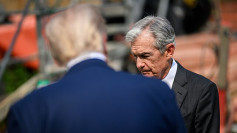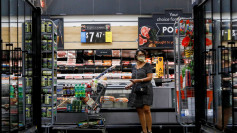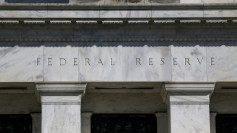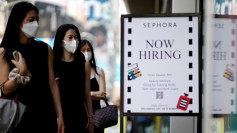The U.S. economy demonstrated remarkable resilience in the second quarter, growing at a 2.8% annualized rate, significantly outpacing expectations. This robust performance, reported by the Commerce Department on Thursday, highlights the economy's strength despite ongoing challenges such as high interest rates and inflation.
The 2.8% growth rate, adjusted for seasonality and inflation, far exceeded the 2.1% forecasted by economists surveyed by Dow Jones. This follows a 1.4% increase in the first quarter, marking a strong upward trajectory. Key drivers of this growth included consumer spending, private inventory investment, and nonresidential fixed investment.
Consumer activity, as measured by personal consumption expenditures (PCE), rose by 2.3% in the second quarter, up from 1.5% in the first quarter. This increase was reflected in both services and goods spending. However, imports, which detract from GDP calculations, surged by 6.9%, the highest quarterly increase since the first quarter of 2022.
Financial markets responded positively to the report, with stock market futures edging higher and Treasury yields moving lower. On the inflation front, the PCE price index, a critical measure for the Federal Reserve, grew by 2.6% in the second quarter, down from 3.4% in the previous quarter. Core PCE prices, which exclude food and energy and are closely watched by the Fed, rose by 2.9%, a decrease from 3.7% in the prior period.
The chain-weighted price index, which considers changes in consumer behavior, increased by 2.3%, below the 2.6% estimate. Additionally, final sales to private domestic purchasers, a key indicator of underlying demand, grew at a 2.6% pace, matching the previous quarter's rate.
Despite these positive indicators, the report also highlighted some areas of concern. The personal savings rate continued to decline, falling to 3.5% from 3.8% in the first quarter. This trend, coupled with rising credit card balances and tightening credit standards reported by the Philadelphia Federal Reserve, suggests potential vulnerabilities in consumer financial health.
Retail sales, however, have remained robust, indicating that consumers are managing to cope with the headwinds of high interest rates and persistent inflation. Yet, the housing market continues to face challenges, with declining sales and rising home prices making it difficult for first-time buyers.
Federal Reserve officials are expected to maintain interest rates at their upcoming meeting, with market pricing suggesting a potential rate cut in September, the first in four years. Policymakers have been cautious about signaling when they might start reducing rates, but recent comments indicate a growing openness to easing policy if economic conditions warrant.
This unexpected economic strength brings the U.S. closer to achieving a "soft landing," where inflation returns to the Fed's 2% target without triggering a recession. Such an outcome has only been accomplished once before, during the 1990s, and current data suggests the economy is on a similar path.
The latest GDP report also revealed that a key measure of consumer demand accelerated to an annual rate of 2.9%, matching the strongest pace in two years. Business investment also showed signs of strengthening in the second quarter, further supporting economic growth.






